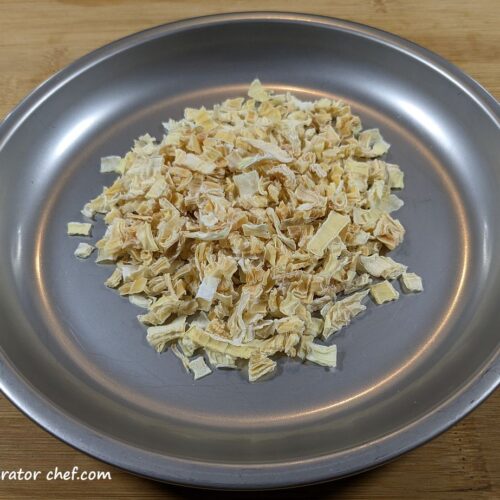
How to Dehydrate Onions
This is our step-by-step guide on how to dehydrate onions. Dehydrating onions is real easy to do. Almost every dehydrated camping meal recipe we have uses onions in one way or another. So it just makes good sense to dehydrate what you use day-to-day and have it on hand in your pantry for when it’s needed.
Equipment
- Removable fruit roll sheet insert (one for each dehydrator tray)
- Common kitchen tools (including cutting boards, chef's knife, etc.)
- Canning jars with tight-fitting lids
- Desiccant packets for moisture control (optional)
- Bench scraper (optional)
Ingredients
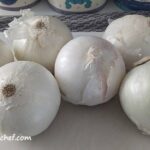 several large onions
several large onions
Instructions
Process the Onions
- Trim away the stem and root ends. Remove the outer layer and any harvest marks.several large onions
- Cut the onion in half, from top to bottom.
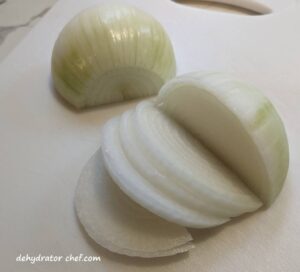
- Cut each onion half into half-round sections, approximately 1/8 to 3/16 inch (3 to 5mm) in width.
- Finely cut the half-rounds into strips or dice into approximately 1/8 to 3/16 inch (3 to 5mm) pieces.
Prepare the Dehydrator
- Spread and layer the finely diced onion evenly on the fruit roll sheets, breaking apart any large clumps. If it’s too crowded, prepare another tray.
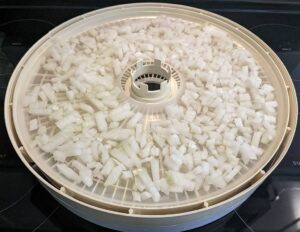
Dehydrate the Onions
- Set the dehydrator thermostat temperature to 135 °F (57 °C). Dry for 8 to 12 hours until done.
When is the Dehydrated Onions Done
- The onion flakes should be crisp and brittle when done.
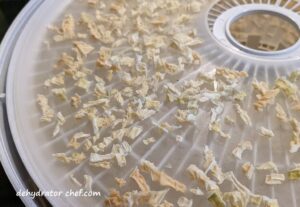
Equalizing and Conditioning the Dehydrated Onions
- After a short cooling period, loosely pack the dehydrated onions into a clean, dry canning jar with a tight-fitting lid, leaving some headspace.
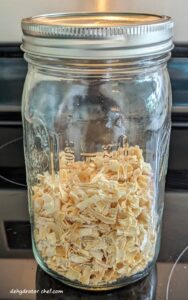
- Every day, for 7 to 10 days, check the jar for moisture. Roll the jar contents around and note any clumping or sticking. If seen, put the onions back on the dehydrator for several more hours.
- If you notice any mold at all, even the slightest bit, throw it all out.
Storing Dehydrated Onions
- Use appropriate-sized canning jars for storage. Depending on how well you dehydrate them and your pantry storage conditions, the dehydrated onions should keep for at least 12 months.
- An optional food-safe desiccant packet will aid with moisture control.
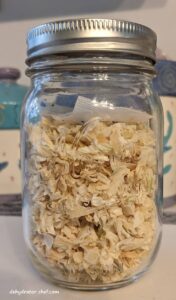
- Attach or include a label describing the jar contents and the date the product was dehydrated. The label identifies the canning jar contents, and the date helps with the rotation schedule. A first-in, first-out rotation helps us to use items that have been on the shelf the longest, so we're using the oldest food first.
Notes
The smell of drying onions is very strong and might make the entire house smell like … well smell like onions. So dehydration should be done outdoors or in a well-ventilated area.
Drying times will vary depending on your dehydrator and environmental conditions. Refer to your dehydrator owner’s manual for recommended temperatures and times for dehydrating specific foods. Remember to use drying times as a guide.
Nutrition
Serving: 2 tablespoonsCalories: 32kcalCarbohydrates: 8gProtein: 1gSodium: 3mgFiber: 1gSugar: 3g
Nutrition information is only an estimate and may differ depending on the ingredients you use.
Tried this recipe?Let us know how it was!